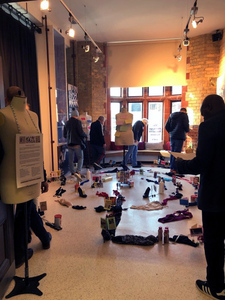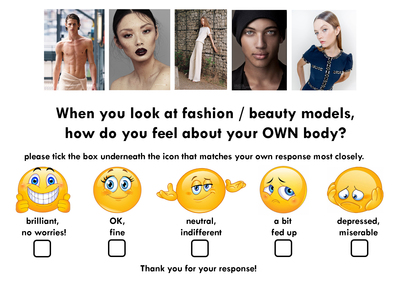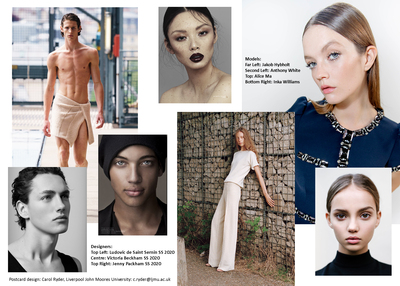McNeill, E and Ryder, C (2019) The Body Image Labyrinth. 10th October 2019, The Florrie, Liverpool. [Show/Exhibition]
![[img]](/21716/1.hassmallThumbnailVersion/Florrie%20Labyrinth%202a.jpg)
|
Text
Florrie Labyrinth 2a.jpg - Published Version Download (243kB) | Preview |
|
|
Text
The Body Image Labyrinth - Introduction - with images (1).pdf - Published Version Download (228kB) | Preview |
|
|
Text
The Body Image Labyrinth FEEDBACK FORM 1.pdf - Published Version Download (215kB) | Preview |
|
![[img]](/21716/9.hassmallThumbnailVersion/The%20Model%20Effect%20postcard%201.jpg)
|
Text
The Model Effect postcard 1.jpg - Published Version Download (1MB) | Preview |
|
![[img]](/21716/15.hassmallThumbnailVersion/The%20Model%20Effect%20postcard%201%20reverse.jpg)
|
Text
The Model Effect postcard 1 reverse.jpg - Published Version Download (2MB) | Preview |
Abstract
The Labyrinth is an ancient path that has been found in all corners of the world. Labyrinths can help us contemplate our thoughts, issues, problems and ideas. Following the path of a labyrinth can help us consider issues in a different way. The winding path of the labyrinth helps us unwind, slow down and be mindful of our thoughts.
Researchers from Liverpool School of Art and Design Carol Ryder and Elaine McNeill have collaborated in the development of a labyrinth to explore issues and anxieties related to body image that can be detrimental to our physical and mental wellbeing. Comments, questions and suggestions to add to the conversation are welcomed from all who walk the labyrinth.
The Body Image Labyrinth encourages us to consider the impact of the widely promoted idealised body - tall, thin, young, predominantly white, heterosexual and able-bodied - a Western standard that has become considered the embodiment of physical perfection around the world. The global adulation of this - often artificial, therefore unachievable - ‘ideal’ fashionable body has given rise to unprecedented levels of body dissatisfaction among girls and women – and increasingly, boys and men - and a trillion-dollar industry, eager to capitalise on our insecurities by selling a dizzying array of ‘solutions’ to perceived physical ‘problems’.
In recent years, a persuasive diversity agenda has begun to challenge the dominance of this version of the ‘fashionable body’ in the media. As a result, in magazine, television and online advertisements, a noticeable move towards greater bodily inclusivity has emerged, supported by academic research that suggests consumers are more likely to buy fashionable clothing if it is modelled on bodies that bear some resemblance to their own.
| Item Type: | Show/Exhibition |
|---|---|
| Uncontrolled Keywords: | bodily inclusivity; body dissatisfaction; body image; body positivity; diversity; diversity agenda; EDI; fashion; ideal body; idealised body; inclusivity; installation; interactive; interactive installation; labyrinth; physical perfection; the fashionable body |
| Subjects: | B Philosophy. Psychology. Religion > BF Psychology N Fine Arts > N Visual arts (General) For photography, see TR N Fine Arts > NX Arts in general G Geography. Anthropology. Recreation > GT Manners and customs > GT500 Costume. Dress. Fashion |
| Divisions: | Art & Design |
| Related URLs: | |
| SWORD Depositor: | A Symplectic |
| Date Deposited: | 16 Oct 2023 08:50 |
| Last Modified: | 16 Oct 2023 08:50 |
| URI: | https://researchonline.ljmu.ac.uk/id/eprint/21716 |
 |
View Item |


 Tools
Tools Tools
Tools

